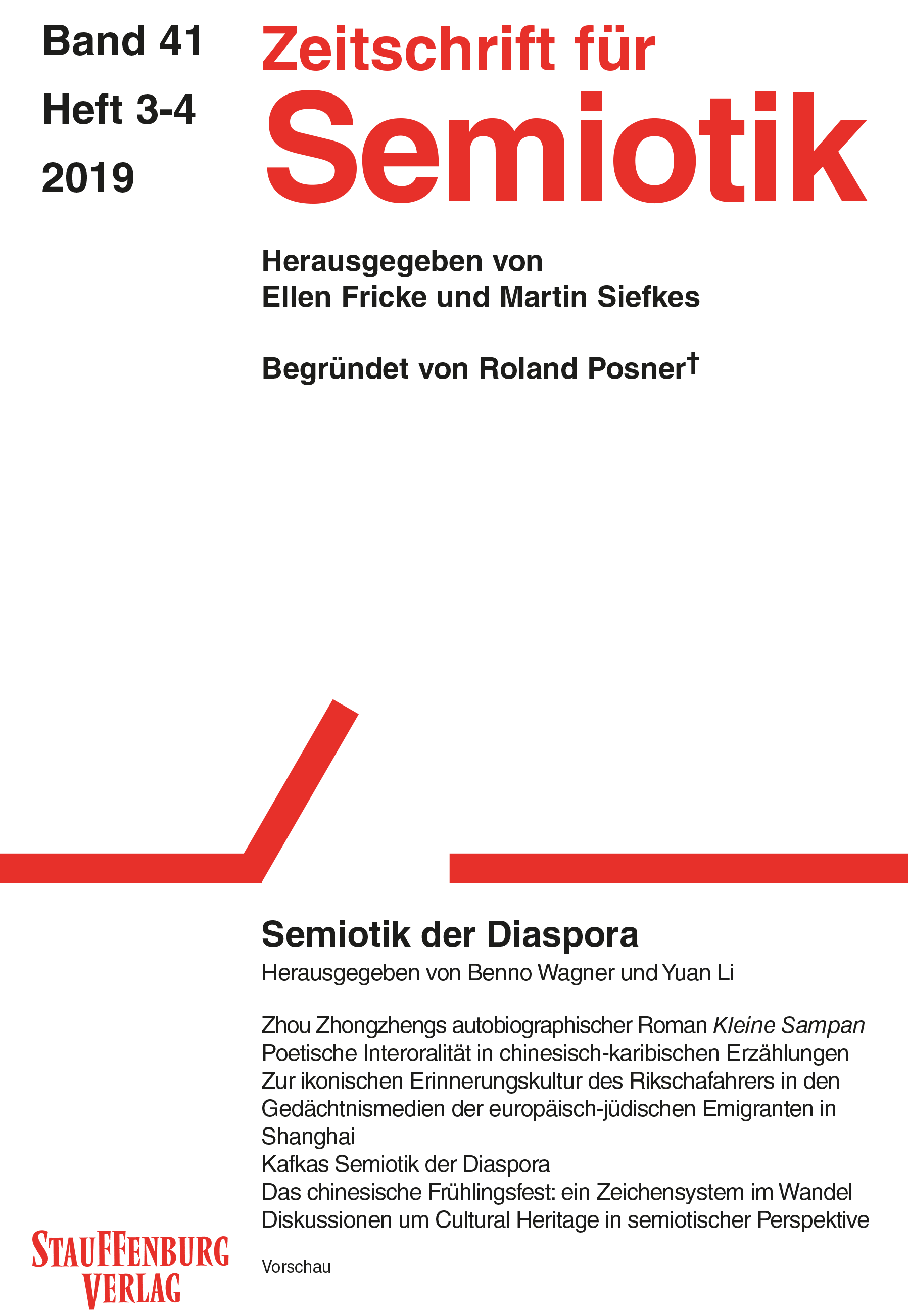Das chinesische Frühlingsfest in zeitgenössischen chinesischen Zeitungsberichten
eine semiotische Rekonstruktion
DOI:
https://doi.org/10.14464/zsem.v41i3-4.717Keywords:
cultural semiotics, Chinese Spring Festival, Chinese New Year, Chunyun, qualitative corpus analysis, code change, China, Chinese culture, Chinese tourism, Guangming Daily , Charles S. Peirce, cultural changeAbstract
On the basis of Roland Posner’s theory of cultural semiotics, the Chinese Spring Festival can be understood as a sign system that manifests itself in the social, material and mental culture of Chinese society. The present contribution explores the spring festival from the perspective of cultural semiotics, based on the qualitative text analysis of all the reports about the Chinese Spring Festival in Guangming Daily from January 1st 2008 to August 1st 2018. Using Peirce’s theory of semiotics, the most important signs related to the Spring Festival are reconstructed and brought into relation to their cultural functions. Through the analysis, it is determined that the Chinese Spring Festival, an important sign system in Chinese culture, has gone through a process of transformation. The semiotic reconstruction demonstrates both the change of meaning of traditional symbols and the generation of new symbols. Cultural semiotics provides the basis for reconstructing contemporary social functions of the Chinese Spring Festival, as well as their historical development.
Downloads
Published
Issue
Section
License
Copyright (c) 2024 Yuan Li

This work is licensed under a Creative Commons Attribution 4.0 International License.
Copyright for articles published in this journal is retained by the authors. The content is published under a Creative Commons Licence Attribution 4.0 International (CC BY 4.0). This permits use, distribution, and reproduction in any medium, provided the original work is properly cited, and is otherwise in compliance with the licence.


